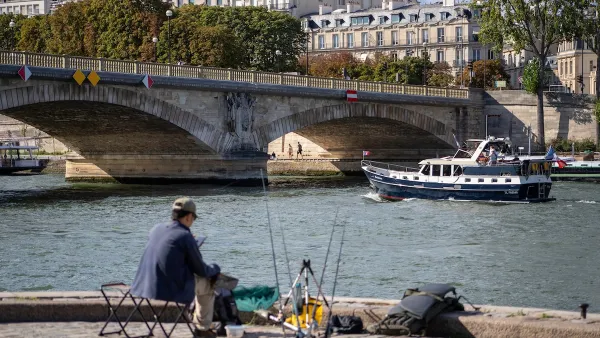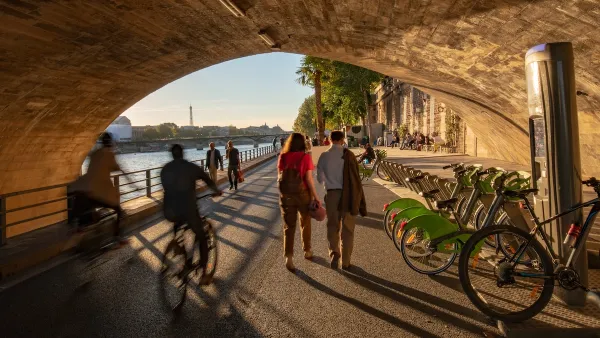No, the title of this post is not an analogy. Diane Ackerman takes a looks at the very literal ways in which cities around the world are harnessing body heat to warm up residential and office buildings.
In Paris, architects from Paris Habitat use body heat from a nearby metro station to provide under-floor heating for a public housing project. In Minnesota, the indoor temperature at the Mall of America is consistently maintained at 70 degrees by body heat, light fixtures, and sunlight. In Stockholm, engineers combine body heat from railway travelers to warm an office building close by. "Part of the appeal of heating buildings with body heat is the delicious simplicity of finding a new way to use old technology (just pipes, pumps and water)," says Ackerman, "Hands down, it's my favorite form of renewable energy."
Heating buildings with body heat can be costly in cities like Paris where buildings and Metro stations need to be adapted, but the design works especially well in Sweden where the addition of sustainable elements help save 24 percent on energy bills. "Widening their vision to embrace neighborhoods, engineers from Jernhusen, the state-owned railroad station developer, are hoping to find a way to capture excess body heat on a scale large enough to warm homes and office buildings in a perpetual cycle of mutual generosity," praises Ackerman. "Heat generated by people at home at night would be piped to office buildings first thing in the morning, and then heat shed in the offices during the day would flow to the residences in the late afternoon."
As for the United States, the body-heat design probably won't be coming soon. "Retrofitting city buildings would be costly at a time when our lawmakers are squabbling over every penny," explains Ackerman. "Also, the buildings can't be more tan 100 to 200 feet apart, or the heat is lost in transit. The essential ingredient is a reliable flux of people every day to provide the heat." She concludes, "But it's doable and worth designing into new buildings wherever possible."
FULL STORY: The Power of a Hot Body

National Parks Layoffs Will Cause Communities to Lose Billions
Thousands of essential park workers were laid off this week, just before the busy spring break season.

Retro-silient?: America’s First “Eco-burb,” The Woodlands Turns 50
A master-planned community north of Houston offers lessons on green infrastructure and resilient design, but falls short of its founder’s lofty affordability and walkability goals.

Delivering for America Plan Will Downgrade Mail Service in at Least 49.5 Percent of Zip Codes
Republican and Democrat lawmakers criticize the plan for its disproportionate negative impact on rural communities.

Test News Post 1
This is a summary

Test News Headline 46
Test for the image on the front page.

Balancing Bombs and Butterflies: How the National Guard Protects a Rare Species
The National Guard at Fort Indiantown Gap uses GIS technology and land management strategies to balance military training with conservation efforts, ensuring the survival of the rare eastern regal fritillary butterfly.
Urban Design for Planners 1: Software Tools
This six-course series explores essential urban design concepts using open source software and equips planners with the tools they need to participate fully in the urban design process.
Planning for Universal Design
Learn the tools for implementing Universal Design in planning regulations.
EMC Planning Group, Inc.
Planetizen
Planetizen
Mpact (formerly Rail~Volution)
Great Falls Development Authority, Inc.
HUDs Office of Policy Development and Research
NYU Wagner Graduate School of Public Service





























